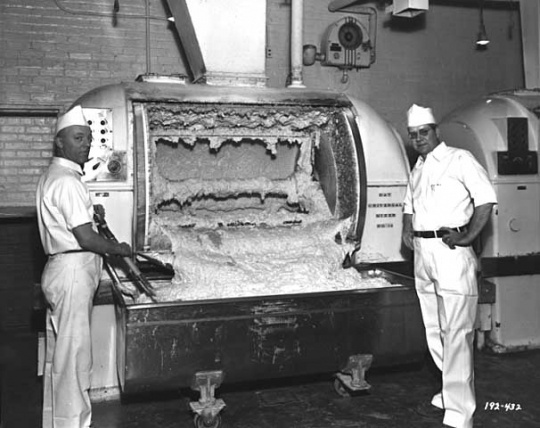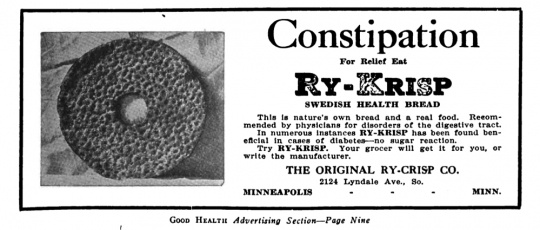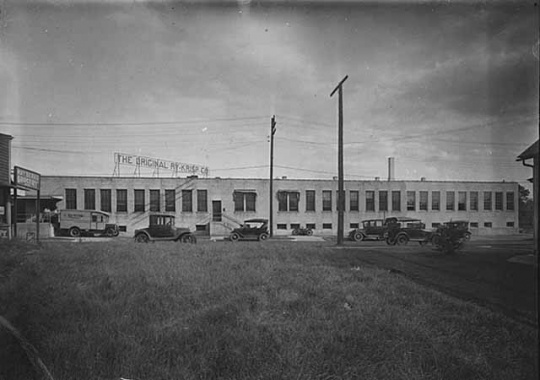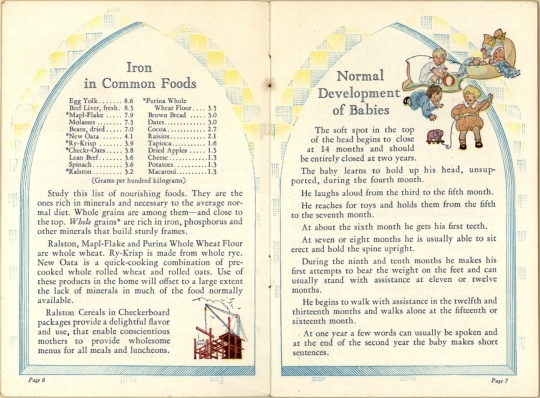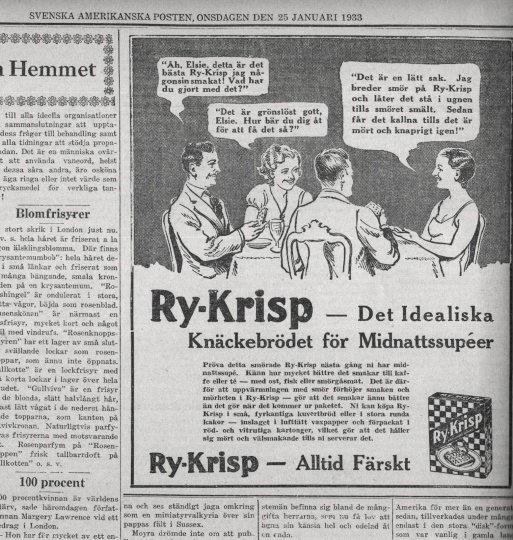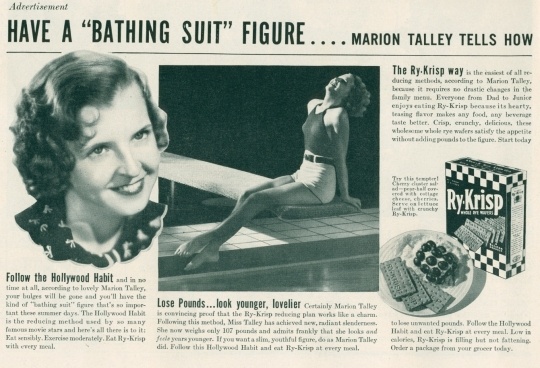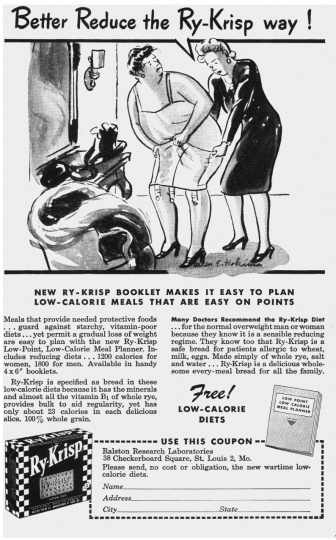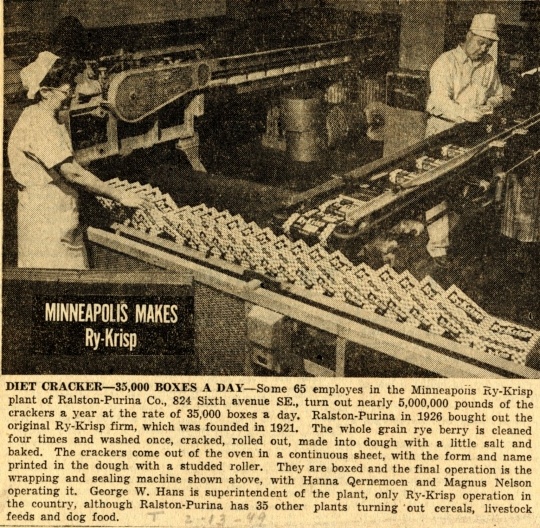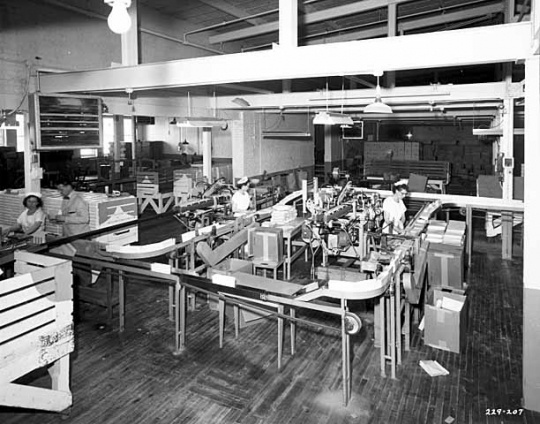In 1904, immigrant baker Arvid Peterson gave a Swedish-styled cracker a modern American name and introduced the country to Ry-Krisp. For decades, Minneapolis was the one and only location where the product was made.
In its first years, the cracker required little advertising, because Scandinavian immigrants knew it as knäckebröd ("crisp bread") from their home countries. In Sweden, such crackers were inexpensive and lasted well on the shelf. At the time, crackers were competitive with more conventional breads because baked loaves were inconsistently made. Ry-Krisp first came in large, flat, thin rounds with a hole in the center. This traditional shape was designed for storing the product on a pole or even a broomstick.
Peterson, his brother Erik, and their widowed mother arrived in America in 1893. They lived for several years in Boston. While there, Arvid learned baking skills, and then for two years he was a farmer in South Dakota. By 1904, the brothers had moved to Minneapolis. "Peterson Bros. Bakers" was at 2120-24 Lyndale Avenue South. Arvid and Erik lived just a few blocks away. It was common for bakers to live close to their shops.
The Ry-Krisp recipe and method changed little as production expanded. Rye kernels were milled into flakes and then combined with water and injections of air to create a crunchy texture. The baking period was short. Though new flavors were eventually introduced, including the unsuccessful pizza-flavored Ry-Krisp, the cracker's core ingredients remained the same.
As a cereal grain, rye offers unique health benefits. When Peterson sold his company to local investors in 1913, vitamins and nutrition were newly appreciated in the United States. New marketing strategies for the product said "Physicians recommend it" and that this "health bread" was a "corrective" for constipation. One ad claimed that the product "exercises the teeth."
In 1922, Ry-Krisp built a new plant at 824 6th Avenue S.E. There was a convenient rail siding for national distribution, but trucks shipped the crackers all over the country.
In 1926, the Ralston Purina Company of St. Louis bought Ry-Krisp but kept production in Minneapolis. Founded in 1902, Ralston Purina was the result of a successful merger of an animal-feed and health-foods firm (Purina) and a breakfast food company (Ralston). There was no actual "founder" named Ralston. An eccentric professor named Webster Edgerly invented the name. He idealistically mixed food production with utopian philosophy. To Edgerly, "R.A.L.S.T.O.N." stood for "Regime, Activity, Light, Strength, Temperation, Oxygen, Nature."
After 1926, as one brand among many in a large company, Ry-Krisp benefited from broader advertising. Ralston also sold "Ralston 100% Whole Wheat Cereal"—a product whose celebrity spokesman was cowboy star Tom Mix. Ralston experimented with the shape of Ry-Krisp, eventually adopting the rectangular cracker it became known for.
Over the years, advertising and consumer interests shaped the appeal of the old-fashioned food. Some early health food enthusiasts mistakenly felt that "pure food" could ensure good breeding, or even racial purity. Other marketers recognized that the cracker's vitamins, fiber content, and long shelf life were more important assets. Ry-Krisp ads or testimonials evolved over several decades. They appeared in professional nursing journals, immigrant newspapers, fishing guidebooks, and general-interest national magazines.
The product was associated with smart dieting. Several 1940s Ry-Krisp ads were drawn by popular cartoonists from the New Yorker magazine. Ry-Krisp was a sponsor of 1940s radio shows featuring famed New York hostess Elsa Maxwell and opera star Marion Talley.
The ConAgra company acquired Ry-Krisp in 2013 but discontinued production two years later. The last batches of the cracker were made at the Minneapolis factory in March 2015.












